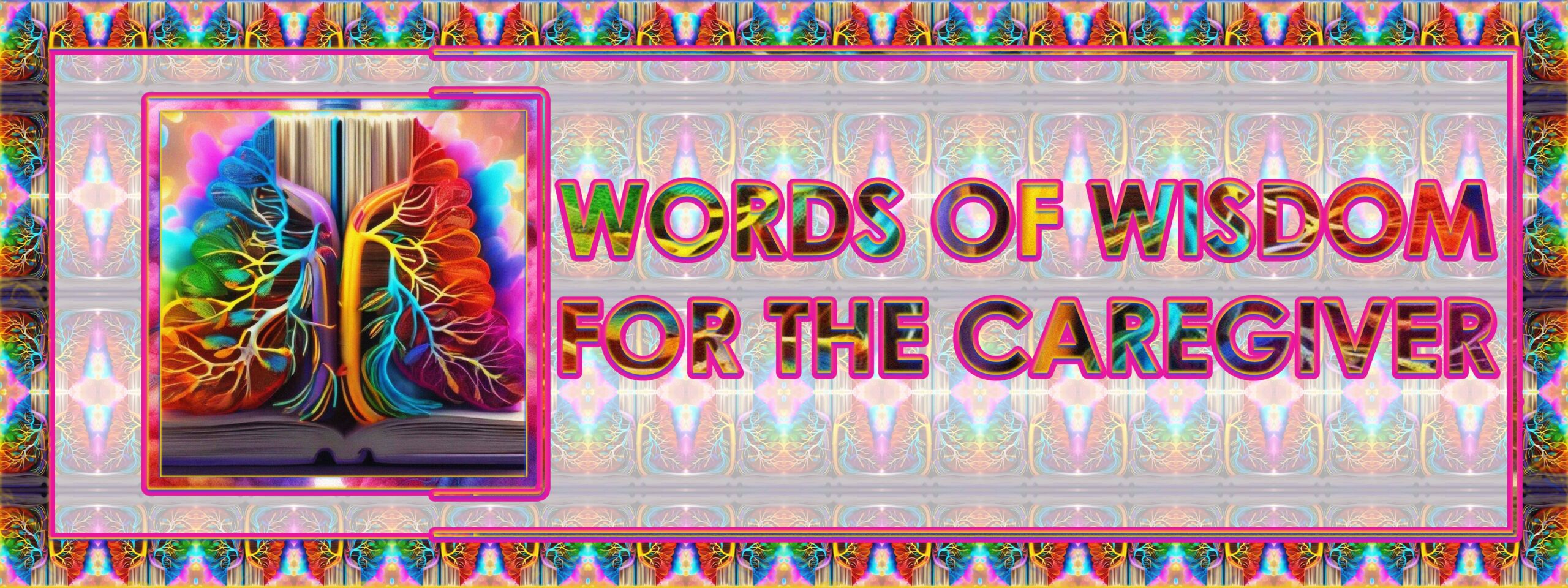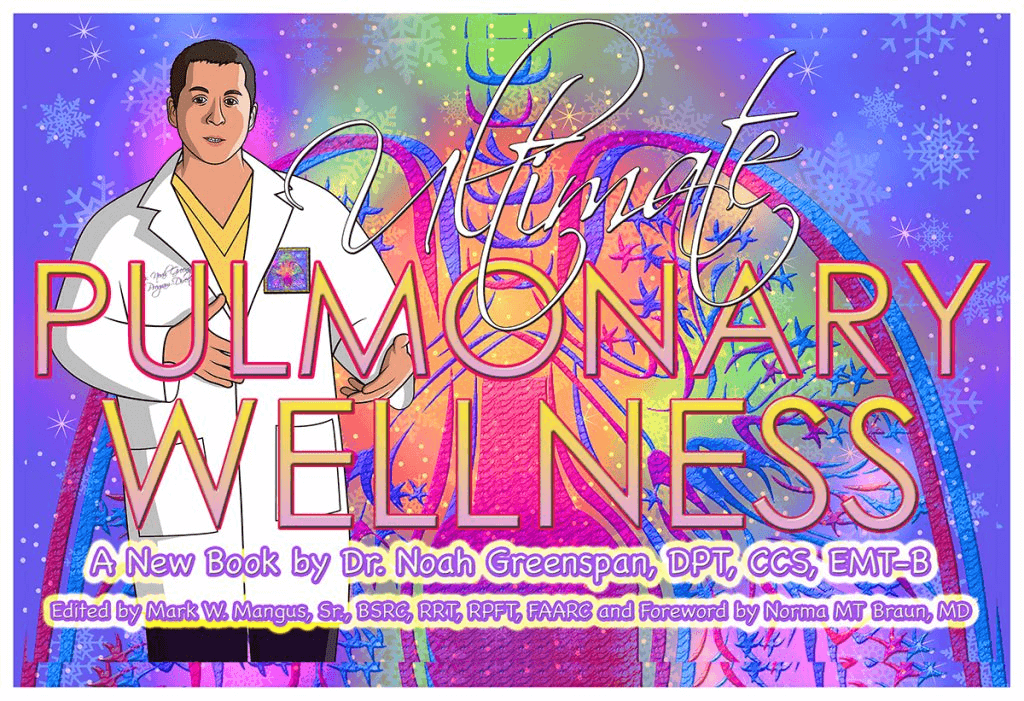
Words of Wisdom for the Caregiver
Ruth O’Bryan
Caring for a loved one with a chronic illness can be one of the most stressful and challenging roles of your life – and believe it or not, one of the most gratifying. No one is born intrinsically knowing how to take care of someone with a medical condition, especially one as serious and complex as pulmonary fibrosis. Nor is there any way to be fully prepared if you find yourself in this position.
Even if you do have some degree of medical training, caring for a loved one is not the same as caring for someone under your professional charge. In a professional medical setting, you typically have a support team to back you up when needed, and at the end of your shift, you get to go home. This is not the case when the person who is sick is your significant other, or parent, child, or anyone else whose well-being you have an intimate and vested interest in.
My name is Ruth, and I was a caregiver to my husband for 15 years while he fought prostate cancer. After he died, I was told that he lived at least seven years longer than he would have if not for the “pit bull with lipstick” (me), making sure he got the best care available. During that time, I was also balancing a full-time job with preparing our meals, keeping up with the household tasks, and helping my husband with his basic medical care and other personal needs. Three years later, I was diagnosed with idiopathic pulmonary fibrosis (IPF) – which means that I write this chapter as someone who has walked both sides of the street.
Early in Your Journey
A diagnosis of pulmonary fibrosis, and all that that encompasses, is likely to lead to many challenges and changes in your life; and believe it or not, maybe even some unexpected opportunities. These may include personal, professional, physical, emotional, social, spiritual, financial, practical, and logistical; like writing this book, for example.
Throughout your journey, the most important thing by far that you can do for your loved one is to let them know that you love them and that you are there to support them in whatever way you can. This can include helping them with practical or logistical tasks like going to the doctor with them, listening, asking questions, and taking notes, helping them with their medications, and “intangibles,” like simply being there to listen.
Note: For the duration of this chapter, I will use the collective “you” to refer to both you and your partner since so many of things we will discuss are personal and can vary from person to person, couple to couple, family to family, and team to team. In addition, what affects the patient affects all involved and vice versa.
Initially, one of the most important tasks you will need to do is to assemble your care team. Although every care team is unique, yours will likely be comprised of you, your significant other (where applicable) and your loved ones, as well as a bevy of doctors: primary care, cardiology, gastroenterology, and of course, your pulmonary doctor. There may also be other specialists and or ancillary team members, depending upon your own unique personal situation.
Communicate, Communicate, Communicate
Honest, caring, and open communication between patient and caregiver is critical. Forming a partnership and taking the time to evaluate each members roles will be an important early step in your relationship. Assist your loved one in identifying how he, she, or they want to contribute to the care plan, encouraging them to maintain as much control, freedom, and autonomy as possible. Each of you should identify and communicate your strengths and be honest about where you may need assistance.
Feeling that you are continuing to contribute to each other’s lives in a meaningful way is important for both of your mental and emotional health, as well as the patient/caregiver relationship. Let each other know how important they are and that they are still a valuable member of your family and community.
One important step you can take that will benefit both you and your loved one is to learn as much as you can about the disease including symptoms, and common medical tests and treatments including potential benefits and side effects. Keep in mind that just because it’s on the internet, doesn’t make it true or current or even safe, so please be sure to use trusted sources like your doctor and your health care team.
Staying Organized
Whether you are the patient or you’re the one caring for someone else, you are often required to keep track of a lot of information. There are many ways that this can be done, depending on your personal preferences and how tech-savvy you may or not be.
Personally, I have found that even in this so-called “paperless society,” paper can still come in handy. One thing that I found helpful was getting a large 3-ring binder complete with front and back pockets, and a three-hole punch to keep your information tidy.
Include a list of important phone numbers (even if you already have them programmed into your phone). Include the names and contact information of all the doctors and other health care professionals on your team, as well as friends and relatives. I have also found it helpful to keep a chronological list of medical visits and the “goings-on” of those visits including any test results or medication changes.
And speaking of which, keep a current list of medications. I’ve had to call EMS several times for both my husband and I, and your list of medications is always one of the first things they ask for. It can be difficult to remember things during an emergency, and emergency professionals are trained to look for a copy of your medications and medical history on your refrigerator door for easy access.
These days, most hospitals and health-care facilities offer an electronic health record or online “MyChart,” which links all hospitals and doctors, so any new medical personnel can view the patient’s history (while also saving a few trees in the process). If you prefer, you can also print out hard copies of the most important items to put in your notebook. Wink wink!
Our Feelings Matter Too
As a caregiver, it is very natural to experience a wide range of emotions. Some of the more common feelings caregivers may experience are sadness, anxiety, depression, guilt, or for lack of a better term, the desire to “fix” their loved one and make things all better. It is not uncommon for some caregivers to want to control the course of action or treatment plan. Overcontrolling can be a natural reaction to fear or stress. However, as difficult as it may be, try your best to be supportive and respectful of your loved one’s wishes without trying to force them to do what you think is right.
The Child Caregiver for a Parent: A Reverse Role
I was a caregiver to my mother before I was a caregiver to my husband. Helping a parent who may still see you as the child can be very difficult for both of you. For one, no matter how old you get, you will always be their child, but it is okay to say, “Please allow me to help take care of you the best I can.”
Caring for a parent can be similar, yet different to that of a spouse or significant other. There may be days when you aren’t sure if you are the child, or the parent/caregiver. It’s important to try to be as flexible and open-minded as possible.
On the good days, your parent may feel good and want to do things for themselves. Let them. At other times, they may be worn out or frustrated. That’s when you can shift into caregiver mode and be there to help. As discussed earlier, communication is key. Ask them what you can do for them to help make them feel better, establishing and respecting boundaries together.
Be on the Lookout for Burnout
As unfair as it may seem, don’t be surprised if people rarely ask how you, the caregiver are doing. Often, when there is a sick family member, much of the attention can be focused on that person and sometimes, people can forget or not even realize how tough the situation can be on the caregiver. Remind them (and yourself) that you are also a person with your own feelings, stressors, and fears, and nobody can be expected to be strong all the time. In the interest of self-care (or self-preservation), it is perfectly fine and even encouraged to let others know when you need some support.
The Cleveland Clinic defines “Caregiver Burnout” as “a state of physical, emotional and mental exhaustion [that] may be accompanied by a change in attitude, from positive and caring to negative and unconcerned.” “Burnout can occur when caregivers do not get the help they need, or if they push themselves to do more than they are truly capable of.”
The symptoms of caregiver burnout can be like stress and depression including feeling sad, blue, irritable, hopeless, and helpless; withdrawal from family and friends; loss of interest in social activities or hobbies; changes in appetite, weight loss or gain; and changes in sleep patterns among others. If you are exhibiting any of these signs, please seek the support you need, from family, friends, support groups, your doctor, and in some scenarios, a mental health professional. Remember that you count too!
I will admit that while my husband was sick, I didn’t take the best care of myself. For years, my doctors would ask me, “What do you do for you?” My answer was always “Nothing, I don’t have time for me.” Now I realize how flawed my perception was. The fact is constant stress will eventually take its toll on your body. I sometimes wonder if having been diagnosed with IPF didn’t have something to do with the stress I was under for 15 years that I never addressed. Again, finding ways to alleviate your own stress is crucial to the well-being of any caregiver and ultimately, benefits the patient, too.
For managing your own stress, you can utilize one or more of the various mindfulness and meditation techniques readily available in a variety of formats including live, virtual, apps and many others.
Here is one example:
Close your eyes and imagine yourself in a serene, happy place where you are comfortable and at peace. Let your mind go, if only for a few minutes. I like to close my eyes and envision myself at the beach, where I sit in a chair with my feet in the water, letting the waves cascade over them as they break on the shoreline. Try to focus on the things that are truly important to you and cast all other thoughts and worries away.
Donnie Vapor, a colorful musician and one of our co-authors, was an inspiration to all those who knew him. He was always finding new and creative ways to maintain a positive attitude and to truly live his life with this disease. He shared this wonderful relaxation technique with us, and I am sharing it with you here in his honor:
If you find your mind racing, visualize a dandelion with all those white, fuzzy seeds. Think about dispersing all your worries onto those soft, billowing seeds. Then, imagine yourself blowing on the seeds and blowing away all your worries with them. Stay there for as long as you want, blowing those seeds, blowing, blowing, as you watch your negative thoughts and worries drifting off into the air.
Another technique that many find helpful is Praying to a Higher Power. One of the most beloved prayers is the Serenity Prayer of St. Francis, which is a prayer for peace: “God grant me the serenity to accept the things I cannot change, the courage to change the things I can, and the wisdom to know the difference.” Regardless of your religious affiliation or lack thereof, this advice seems to make good sense.
Stay Healthy!
Eat a nutritious diet, drink plenty of water, and try to get in at least a little exercise each day. This doesn’t mean you have to run a marathon. Walk in your neighborhood, ride a bicycle, do some yoga or Pilates, or if you have access to a pool, try swimming or taking a water aerobics class. If you need a little break, ask a friend or family member to step in so you can have some much needed “me (you) time.” Remember, if you’re not feeling
well, you won’t be much help to anyone else.
Keep A Journal
Journaling can be a very helpful therapeutic release for both patients and caregivers because you’re able to express your deepest thoughts and feelings without worrying about what others may think or feel. This is for you and you alone unless you choose to share it with someone else. Many people are pleasantly surprised at how much better they feel after a journaling session.
Join A Group
Consider attending a support group meeting for caregivers. These groups can be very powerful and empowering, providing education and support for and from others who are going through the same or similar experiences. Sometimes, they are the only ones who can truly understand how you feel because they too are “walking the walk.” This validation can be invaluable for your emotional, cognitive, and physical well-being.
Seek Professional Help When Needed
There are times when your situational stressors and emotions can feel like they are too much to bear. In this case, it is important to seek the assistance of a mental health professional. There is no shame in asking for help. In fact, it’s a sign of strength.
Everyday Challenges
One of the biggest challenges for the caregiver and patient is dealing with your frustrations at not being able to do the things you used to do, as well as the stress and anxiety that accompanies shortness of breath. Try to work through these feelings together by focusing on the here and now and again, again, again, please don’t hesitate to seek the help of a mental health professional if things become too tough to bear on your own.
Accentuate the Positive!
Even when faced with a chronic illness, there are still many ways you can maximize the quality of your lives, and with a little creativity, you may even be able to have a little fun in the process. Here are some ideas for fun, meaningful activities you can try:
- Make a Bucket List! Include some of the things that you’ve always wanted to do but still haven’t gotten around to…and do some of them!
- Share Your Stories with Family and Friends! I have written something for my children and grandchildren called…“The Book of Ruth.”
- Go Through Those Old Photographs! Scan them into your computer and hit the “share” button. Label them so when your family members go through them, they won’t be saying, “who the heck is that?”
- Movie Night! Watch a favorite movie with family or friends. Add a little comedy. They say laughter is the best medicine…and don’t forget the popcorn!
- Don’t Give Up the Things You Love! Enjoy as much as many and as often possible. Ann, one of the contributors told me that even folding laundry made her feel like she was still able to contribute to her own life. How about knitting or needlepoint, playing cards, or whatever it is that makes you uniquely who you are? You, Do You!
- Be a Tourist in Your Own City. Visit the places you have planned to go but never took the time to do so.
Insert YOUR ideas here:
1.
2.
3.
4.
5.
You Are Not Alone
Our hope is that this chapter was helpful to you and your loved ones. In it, I tried to give you some insight, suggestions, tools, and advice that we all wished we had known about while we were struggling to find answers. And if you think of any good ideas, please feel free to share them with us!
We wish you and yours the very best!
Order Your Book Now!

Purchase Your Signed Copy Today!
- Within the United States: $27.50 including Postage and Handling!
- Outside of the US: $52.00 including Postage and Handling! (Sorry. We know that is more than the cost of the book but we cannot ship for less.)
Subscribe To Our Newsletter For Upcoming Offers
- Be the first to know about new webinars, exclusive offers, and podcasts.
























